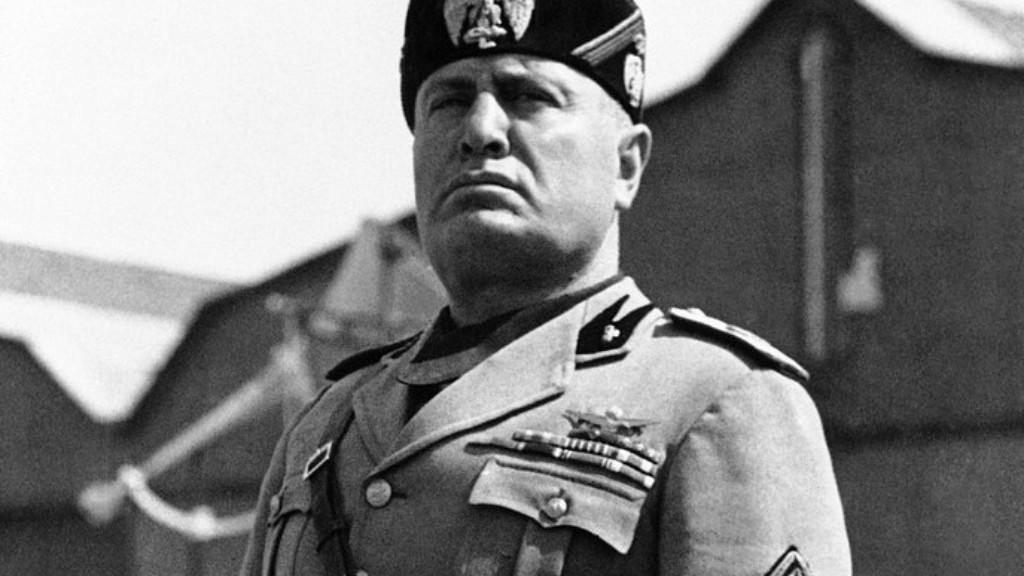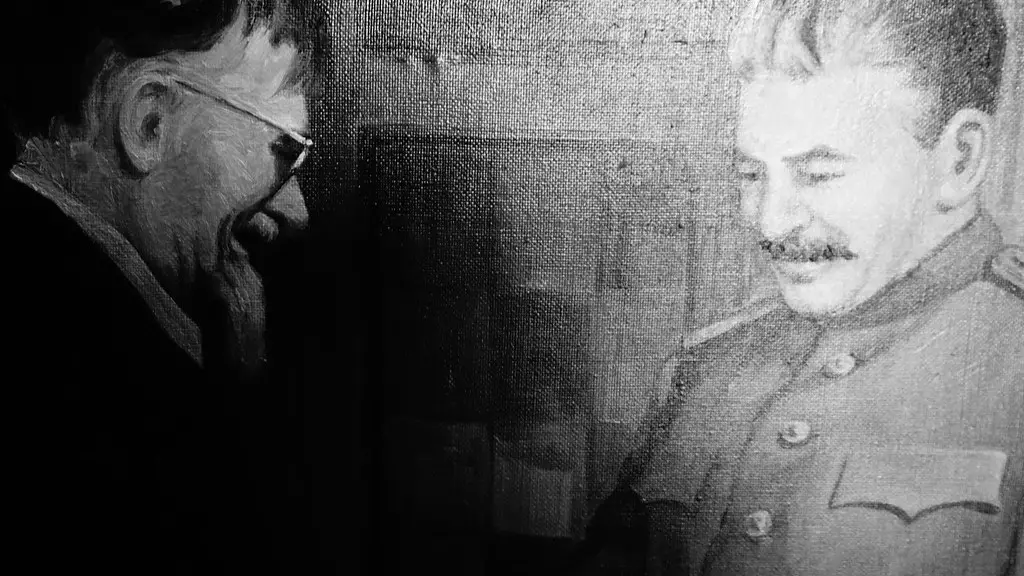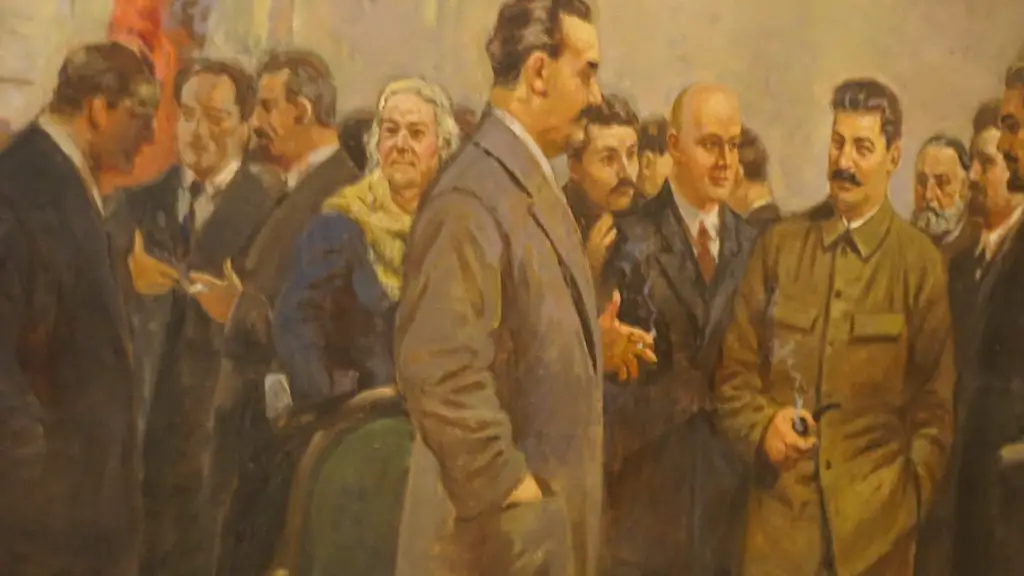Fascism, as espoused by Benito Mussolini, was a political ideology that emphasised the need for a strong and centralised government, as well as a dedication to national unity and pride. For Mussolini, fascism was the solution to the problems that had beset Italy since its unification in the 19th century. By uniting the country under a strong leader, and through the implementation of strict government controls, Mussolini believed that Italy could finally realise its potential as a great power. While fascism was certainly not without its critics, Mussolini was able to use it to consolidate his power and create a one-party state during his years as Prime Minister.
Fascism was a political movement that began in Italy in the early 1920s. Under the leadership of Benito Mussolini, the Fascists gained power and established a dictatorship. They promoted Italian nationalism and expansionism, and they supported a rigid class system. The Fascists crushed all opposition, and they used violence and terror to stay in power.
How is Benito Mussolini connected to fascism?
In 1919, Mussolini created the Fasci Italiani di Combattimento, (Italian Combat Squads), the precursor to his Fascist Party. This group engaged in violence against Socialists and other enemies. In 1921, he founded the Fascist Party, turning his paramilitary movement into a formal political party. The Fascists gained power in 1922, and Mussolini became Prime Minister. He ruled as a dictator, and promoted aggressive nationalism, militarism, anti-communism, and anti-Semitism. The Fascists were defeated in World War II, and Mussolini was executed in 1945.
Fascism in Italy developed out of a combination of several different factors. One of the most important was the rise of nationalism in the late 1800s and early 1900s. This led to a desire among many Italians to see the country unified and free from foreign control. Another important factor was the rise of socialism in Europe. This led to a split in the Italian Socialist Party, with one faction supporting unification and the other faction supporting socialism. The unification faction eventually won out, and this helped to pave the way for the rise of fascism.
Mussolini was a key figure in the development of Italian fascism. He was a strong advocate for national unity and believed that socialism could be achieved through a strong central government. He also believed in the use of violence to achieve political goals and was not afraid to use force to suppress his opponents.
Italian fascism reached its peak in the 1930s. This was a time of strong economic growth and expansion for the country. Mussolini also worked to build up the military and to make Italy a leading power in Europe. However, the fascist regime came to an end in 1943, when Mussolini was overthrown by the Italian people.
How did Italy use fascism
Fascism in Italy promoted a corporatist economic system, which linked employer and employee syndicates together in associations. This was done in order to collectively represent the nation’s economic producers and work alongside the state to set national economic policy.
Fascist movements typically advocate for a strong, centralized government that exerts complete control over the populace. They also tend to be highly nationalistic, promoting a sense of pride and unity among the people of their country. Additionally, fascist movements typically promote hierarchy and elitism, with a clear division between the “haves” and the “have-nots”. Finally, fascism typically relies heavily on militarism and the use of force to achieve its goals.
What is an example of fascism?
The Nazi Party, led by Adolf Hitler, was a political party in Germany that espoused a form of fascism that incorporated fervent antisemitism, anti-communism, scientific racism, and the use of eugenics into its creed. The party was founded in 1920, and its members were commonly referred to as Nazis. The party’s platform included the abolition of the Weimar Republic, the establishment of a one-party dictatorship, the extermination of the Jews, the establishment of a totalitarian state, and the conquest of new territory in Europe and beyond. The party was successful in gaining power in 1933, and Hitler became Chancellor of Germany. The party’s policies led to the outbreak of World War II, and the eventual defeat of the Nazi regime.
Fascism is a political ideology that is characterized by a dictatorial leader, centralized autocracy, militarism, forcible suppression of opposition, and a belief in a natural social hierarchy. Fascism is often associated with far-right, ultranationalist movements.
What tactics did Mussolini use to gain power?
Mussolini was a powerful and influential political figure in early 20th century Europe. He was known for his aggressive and dictatorial leadership style, as well as his staunch adherence to the principles of Fascism. Mussolini was a central figure in the creation of the Fascism ideology, and he played a key role in its spread throughout Europe. Mussolini’s tactics of undermining judges and indoctrinating children were instrumental in his seizure of power, and ultimately led to the rise of Fascism in Europe.
Mussolini’s goal was to essentially establish himself as a dictator in Italy. He changed the parliament in a way that would benefit the fascists and slowly gained more power over the government and the people. He was referred to as ‘Il Duce’ or ‘the Leader’ by many and his goal was to have a totalitarian state in Italy.
What is fascism in simple words
Fascism is generally defined as a political movement that embraces far-right nationalism and the forceful suppression of any opposition, all overseen by an authoritarian government. Fascists strongly oppose Marxism, liberalism and democracy, and believe the state takes precedence over individual interests.
Fascism is a way of organizing a society in which a government ruled by a dictator controls the lives of the people and in which people are not allowed to disagree with the government.
Who invented fascism?
Benito Mussolini was an Italian politician and journalist who was the founder and leader of the National Fascist Party. He was Prime Minister of Italy from 1922 to 1943, and was the ruler of Italy from 1925 to 1945. Mussolini was one of the key figures in the creation of fascism.
Fascism is a political ideology that rose to prominence in the early 20th century. It was marked by aggressive nationalism, totalitarianism, and anti-communism. In its early years, fascism was a movement of vigorously competing currents and factions. One of the most prominent and renowned leaders of fascism was Benito Mussolini, who founded the fascist party in Italy.
How do you explain fascism to a child
Fascism is characterized by a strong leader who controls everything and is a symbol of the country. The leader builds up the police force to punish those who disobey and also builds up the army to threaten other countries.
Fascism appeared to bring stability, well-being and national honour to many Italians, even though it caused economic hardship and loss of basic human rights for others. Many people were willing to accept the authoritarian government in exchange for the benefits they received.
What are the points of fascism?
Fascism is a political ideology that puts the nation above the individual. The individual exists to serve the nation and its interests. Fascism is an ultranationalist, authoritarian political philosophy that combines elements of nationalism, militarism, economic self-sufficiency, and totalitarianism.
Italian Fascism was rooted in Italian nationalism and the desire to restore and expand Italian territories. This was seen as necessary for a nation to assert its superiority and strength and avoid succumbing to decay. Fascism Promoted national unity and pride, as well as a militaristic culture. This led to aggressive foreign policies, as Fascists attempted to build an empire. Ultimately, however, Fascism was unable to sustain its power and collapsed in the mid-twentieth century.
What did Mussolini do to improve Italy
Public works construction was a key part of Mussolini’s plans to make Italy a great power again. He oversaw the construction of hundreds of bridges, roads and public buildings across the country. The results were impressive, but the costs were high and the project was not completed within the five-year timeframe he had promised.
Mussolini was a strong believer in a unified society that placed more emphasis on national identity than social class or political affiliation. He thought that a powerful and determined dictator was needed to help Italy reach its potential and to get rid of all the negative aspects of society.
Warp Up
Benito Mussolini used fascism as a political ideology to gain power and influence in Italy. He was a strong advocate for national strength and unity, and he believed that fascism was the best way to achieve this. Mussolini was a very charismatic leader, and he was able to use this to his advantage in order to gain support from the people. He was also a very effective speaker, and he used this to his advantage in order to rally support for his cause.
In conclusion, Benito Mussolini used fascism as a way to gain and maintain power. He did this by using violence and propaganda to control the people. He also used fascist ideas to justify his actions, such as the need for a strong leader and the need to crush his opponents.





